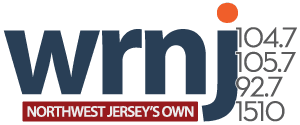
Delaware River Joint Toll Bridge Commission proposes 2026 toll increases to offset rising costs
The Delaware River Joint Toll Bridge Commission (DRJTBC) has announced a proposed toll adjustment set to take effect in 2026, aimed at addressing escalating construction costs, maintaining financial health, and funding future infrastructure improvements across its network of bridges connecting New Jersey and Pennsylvania.
Under the proposed schedule, E-ZPass users in passenger vehicles (Class 1, two axles and under eight feet in height) would see a 50-cent increase, bringing their toll to $2. Non-E-ZPass users using the TOLL BY PLATE system would face a $2 hike, raising the toll to $5.
For larger vehicles, such as trucks over eight feet tall, the E-ZPass per-axle toll would increase by $2 to $6.50, while TOLL BY PLATE users would be charged $8 per axle, up $3 from current rates. The Commission notes that TOLL BY PLATE rates remain higher due to the increased administrative costs of identifying vehicles and processing payments by mail.
DRJTBC collects tolls in the westbound (Pennsylvania-bound) direction only and discontinued cash collections in early 2024, transitioning entirely to E-ZPass and TOLL BY PLATE systems.
Why the Increase?
DRJTBC Executive Director Joseph J. Resta cited inflationary pressures in construction materials as a primary driver behind the proposed increase. “In the past five years, hot-mix asphalt has risen 28 percent, concrete has risen 46 percent, structural steel has risen 66 percent, and fuel has risen 44 percent,” Resta said. “We still have supply chain issues delaying projects and increasing project costs despite the end of the pandemic.”
The Commission said the toll increase would help it maintain reserve funds and debt service ratios—key metrics for retaining high credit ratings that reduce borrowing costs. The agency’s Financial Resilience Policy, adopted during the COVID-19 pandemic, commits to maintaining these financial safeguards to support ongoing and future capital improvement projects.
Bridge Responsibilities
The DRJTBC operates eight toll bridges and 12 toll-supported bridges—non-revenue-generating spans the agency is legally obligated to maintain under a congressionally ratified interstate compact. The agency maintains more than 70 lane miles of road surface, numerous approach bridges, and other operational infrastructure, all funded entirely by toll revenues.
Next Steps
The Commission’s New Jersey and Pennsylvania members unanimously approved launching a public comment process at their July meeting in Yardley. Public input will be gathered through three virtual hearings scheduled for fall 2025, along with written submissions accepted online, by mail, or phone.
A comprehensive report of all eligible comments and staff responses will be presented to the Commission before a final decision is made on the toll proposal.
If enacted, DRJTBC officials emphasized that their toll rates would remain lower than—or competitive with—those charged by other tolling agencies in the region.
Affected Toll Bridges:
The DRJTBC’s eight toll-collecting bridges include:
- Trenton-Morrisville (Route 1)
- Scudder Falls (I-295)
- New Hope-Lambertville (Route 202)
- I-78
- Easton-Phillipsburg (Route 22)
- Portland-Columbia (Routes 611, 46, 94)
- Delaware Water Gap (I-80)
- Milford-Montague (Route 206)





